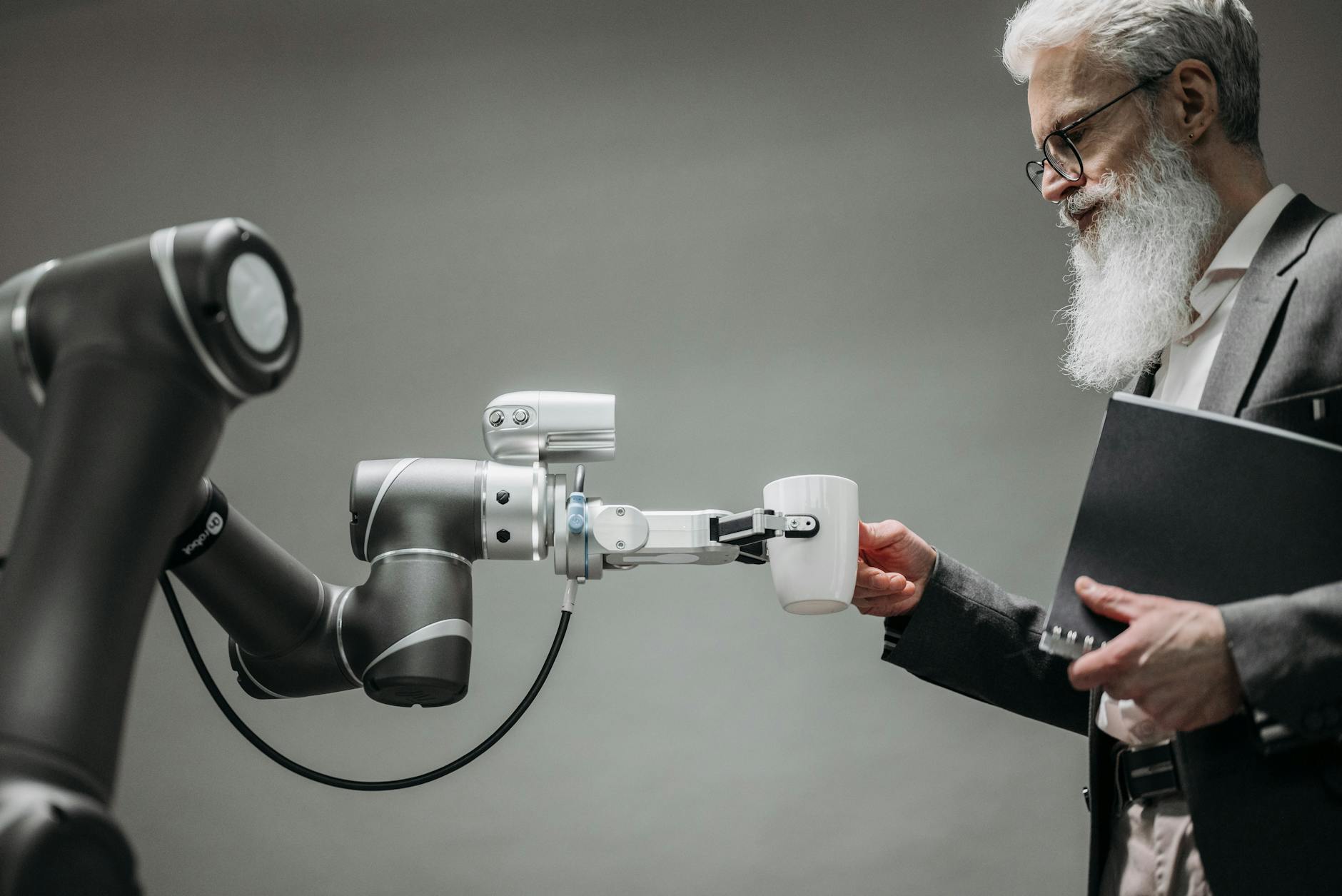A Glimpse into the Past: Early Humanoid Robots
In the 1400s, Leonardo da Vinci, renowned for his visionary designs, conceptualized a complex mechanical robot clad in a suit of armor. This early marvel was capable of sitting, standing, and independently moving its arms, all powered by an intricate system of pulleys and cables. This marked one of the earliest recorded attempts at creating a humanoid robot, blending artistry with engineering brilliance.
Moving forward to the 17th to 19th centuries, Japan introduced the world to karakuri puppets, a fascinating category of humanoid automata. These intricately designed puppets, resembling dolls, were utilized for entertainment in theaters, homes, and religious festivals, demonstrating the blend of cultural artistry and mechanical ingenuity.
The Influence of Sci-Fi on Humanoid Robots
Science fiction has long captivated our imaginations with the potential of humanoid robots. From the tin woodman in the 1930 adaptation of “The Wizard of Oz” to the iconic droid companions C-3PO and R2-D2 in the 1977 blockbuster “Star Wars,” these narratives have shaped our vision of robots with human-like qualities.
Real-World Humanoid Robots
The transition from fiction to reality saw notable advancements with Honda’s Asimo, launched in 2000. Asimo showcased significant technological strides in intelligent machines, setting a benchmark for future humanoid robots. In 2016, Sophia, developed by Hanson Robotics in Hong Kong, made headlines. Modeled after Audrey Hepburn, Sophia integrated artificial intelligence, visual data processing, and facial recognition, becoming a symbol of modern robotics.
AI-Enabled Robots: The Future is Now
The capabilities of AI-enabled robots are vast, ranging from serving coffee to folding laundry, carrying boxes in warehouses, handling hazardous waste, caring for the elderly, and even engaging in battlefield operations. The rapid progress in AI and the surge in investment have accelerated the development of humanoid robots beyond previous expectations.
Humanoids, advanced robotic machines capable of emulating human actions and reasoning, epitomize the convergence of AI, biomechanics, machine learning, and sensor technology. These robots are designed to mimic the human form, aligning with our human-centric environment, from tools to infrastructure.
Market Growth and Economic Impact
The global market for humanoid robots is expanding faster than anticipated, with significant impacts on logistics, manufacturing, healthcare, and hospitality. Despite high development costs, the market is projected to reach $38 billion by 2035. Supporting this growth, the manufacturing costs have decreased significantly, making these advanced robots more accessible.
Leading Companies in Humanoid Robotics
Several companies are at the forefront of humanoid robotics, each contributing uniquely to the field:
Boston Dynamics
Boston Dynamics’ Atlas, launched in 2013 for the DARPA Robotics Challenge, has evolved into an all-electric marvel. Known for its bipedal agility, human-like movement, autonomous navigation, and robust learning abilities, Atlas can perform complex tasks such as lifting objects, jumping, and backflips, and is widely acclaimed in disaster response and industrial applications.
Tesla
Tesla’s Optimus Gen 2, still in development, promises versatility across various domains, including manufacturing, construction, healthcare, and entertainment. With precise, flexible movement capabilities and hands equipped with 11 degrees of freedom, Optimus leverages Tesla’s expertise in battery technology, sensing, and computing. CEO Elon Musk anticipates a launch cost of $20,000 per unit.
Agility Robotics
Agility Robotics’ Digit, designed for logistics work, has been adopted by Amazon. Digit’s unique “backward” legs allow it to maneuver in tight spaces and handle bulk material within warehouses. Its design enables operations from floor level to nearly 6 feet, enhancing efficiency in human-centric environments.
Figure AI
Figure AI’s collaboration with OpenAI has resulted in Figure 01, a general-purpose robot resembling a human in appearance and movement. Demonstrating advanced capabilities, Figure 01 has attracted significant investment from tech giants like Jeff Bezos, Nvidia, and Microsoft.
Engineered Arts
Engineered Arts’ Ameca, with its silicon face and advanced sensors, can track movements, express emotions, and recognize faces and voices. Currently part of the UAE’s Museum of the Future’s robotic family, Ameca interacts dynamically with visitors, showcasing the potential of expressive humanoid robots.
Nvidia
Nvidia’s Project GROOT is a groundbreaking initiative aimed at enhancing robot learning both in simulation and real-world applications. By supporting leading humanoid robot makers, Project GROOT is set to revolutionize how robots understand natural language and emulate human movements.
The Road Ahead: Challenges and Opportunities
While the potential for humanoid robots is immense, challenges remain. High development costs, technical complexities, and ethical considerations must be addressed to realize their full potential. However, the continued convergence of AI, machine learning, and robotics promises a future where humanoid robots become integral to various industries, enhancing efficiency and transforming our way of life.
Frequently Asked Questions (FAQs)
What are humanoid robots?
Humanoid robots are advanced robotic machines designed to mimic human actions and reasoning, often resembling the human form to navigate and interact with human-centric environments.
Who are the leading companies in humanoid robotics?
Prominent companies include Boston Dynamics, Tesla, Agility Robotics, Figure AI, Engineered Arts, and Nvidia, each contributing uniquely to the development of humanoid robots.
What are the applications of humanoid robots?
Humanoid robots are used in various fields such as logistics, manufacturing, healthcare, hospitality, and entertainment, performing tasks ranging from material handling to elderly care.
What are the challenges in developing humanoid robots?
Challenges include high development costs, technical complexities, and ethical considerations related to the integration of advanced AI and robotics into society.
What is the market outlook for humanoid robots?
The market for humanoid robots is projected to grow significantly, reaching an estimated $38 billion by 2035, driven by advancements in AI and decreasing manufacturing costs.
Summing Up
The journey from Leonardo da Vinci’s early mechanical designs to today’s AI-enabled humanoid robots illustrates a remarkable evolution driven by human ingenuity and technological advancements. As we stand on the brink of a new era, the future of humanoid robots is bright, with endless possibilities for enhancing human life and transforming industries.



